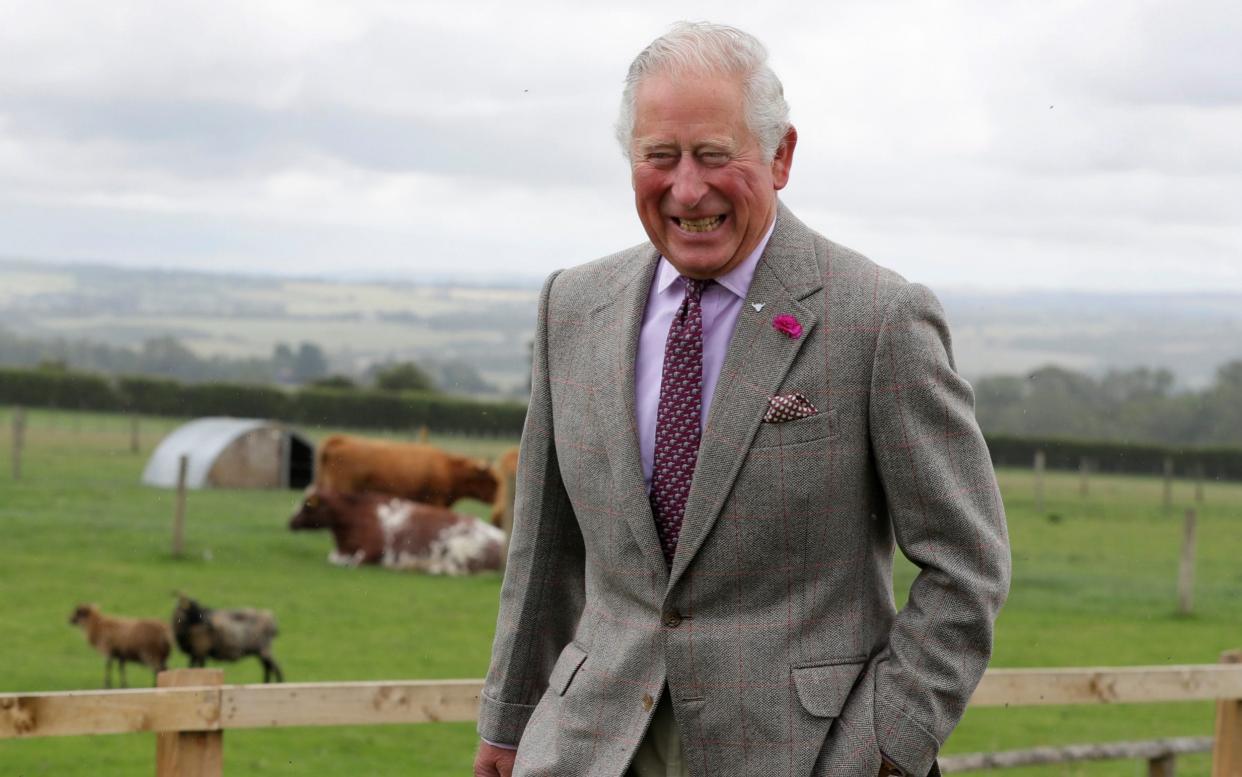How Prince Charles stays 'as fit as a mountain goat' in his 70s

Earlier this year, the Prince of Wales joked that keeping his weight in check is a ‘never ending battle’.
The prince made the comments to his tailor, Emma Willis, and admitted it has been ‘something of a struggle’ to remain the same shirt size for the last six years. Which is something of a feat for a 71-year-old, given that men over a certain age tend to store fat around their mid-section.
Earlier this week, however, the Duchess of Cornwall appeared on BBC Radio 5’s The Emma Barnett Show and revealed why this might be: “He is probably the fittest man of his age I know,” said Camilla, while discussing her husband’s health and fitness in the wake of his coronavirus diagnosis and subsequent speedy recovery back in March.
“He’ll walk and walk and walk. He’s like a mountain goat, he leaves everybody miles behind.”
The duchess went on to say that while she’s been taking virtual Silver Swans ballet classes via Zoom during the pandemic, she’s been unable to get her husband to do them with her: “I did not get him doing a plié, but he is a very, very fit man. But he is not doing ballet.”
He does, however, perform a 12-minute Royal Canadian Air Force exercise plan twice a day, something his father, the Duke of Edinburgh, and sons, Princes William and Harry, are also said to do. The plan was developed by Dr Bill Organ in the late 1950s, and is known as The 5BX Plan (Five Basic Exercises), and includes stretching, sit-ups, back extensions, push-ups and running on the spot.
Some experts have questioned whether the prince’s fitness could have helped him recover quickly from Covid-19; he said himself he "got off lightly", whereas the Prime Minister Boris Johnson, who is 15 years younger than the prince and was diagnosed around the same time, was reportedly convinced that the reason he ended up in intensive care was because of his weight. A study by Glasgow University has linked obesity to a higher chance of suffering badly from coronavirus.
Prince Charles's continued fitness as he goes into his 70s is a good example of how it’s possible to slow down the body’s ageing process, says Stuart Roberts, author of Get Strong, Get Fit, Get Happy: A Life Manual for 40+. “I think one of the main problems with people when they view fitness at any age past 50 is there's this mental block,” he says. “People tend to think that because they're a certain age they just can't do things anymore. Unfortunately, if you think like that, your body tends to follow your mind.”
One of the biggest causes of midlife weight gain is how our metabolism slows down as we get older.
Reduced metabolism is caused by sarcopenia – the muscle atrophy that happens to all of us from about the age of 30. Unless you’re actively working out and doing weight bearing exercises, like lifting weights or exercises that use your own body weight such as press-ups and squats, the average person will lose 3-8 per cent of their muscle mass with every passing decade, which means they need fewer calories to sustain their bodies.
A study from the American College of Sports Medicine claimed that by adding just 2-4 pounds of muscle to your body, via body weight exercises, you could burn 100 extra calories a day even at rest.

So how can you keep fit in your 60s, 70s and beyond? “Little and often is ideal,” says Sammy Margo, leading physiotherapist and spokesperson for family healthcare specialist Mentholatum. “If you're unable to do much you can break up your 150 minutes of light exercise per week [the amount recommended by the NHS] into bite-sized chunks of ten minutes.”
Some resistance training is key as we get older, says Roberts: “There was some research done in a retirement home on people in their 70s and 80s who were getting very frail,” he explains. “Researchers gave a very light weight to subjects and asked them to do the exercises really slowly. After about six weeks, these people had a 23 per cent increase in strength through doing very slow exercises.
"It's very safe, the risk of injury is reduced, and you only need to do about six reps of each exercise before you fatigue.”
Roberts also recommends exercises like walking, swimming, cycling and gardening (the prince is a keen gardener; last month he said the link between gardens and health has ‘never been more relevant’ than during the pandemic) for boosting aerobic fitness because they are low-impact exercises, which shouldn’t cause too much joint pain.
“Dancing is probably one of the best ones, however, because it covers so many areas: cardio, strength, mobility, balance, coordination, agility, which tend to suffer in older people.”
So perhaps the prince should give Silver Swans a go after all…


